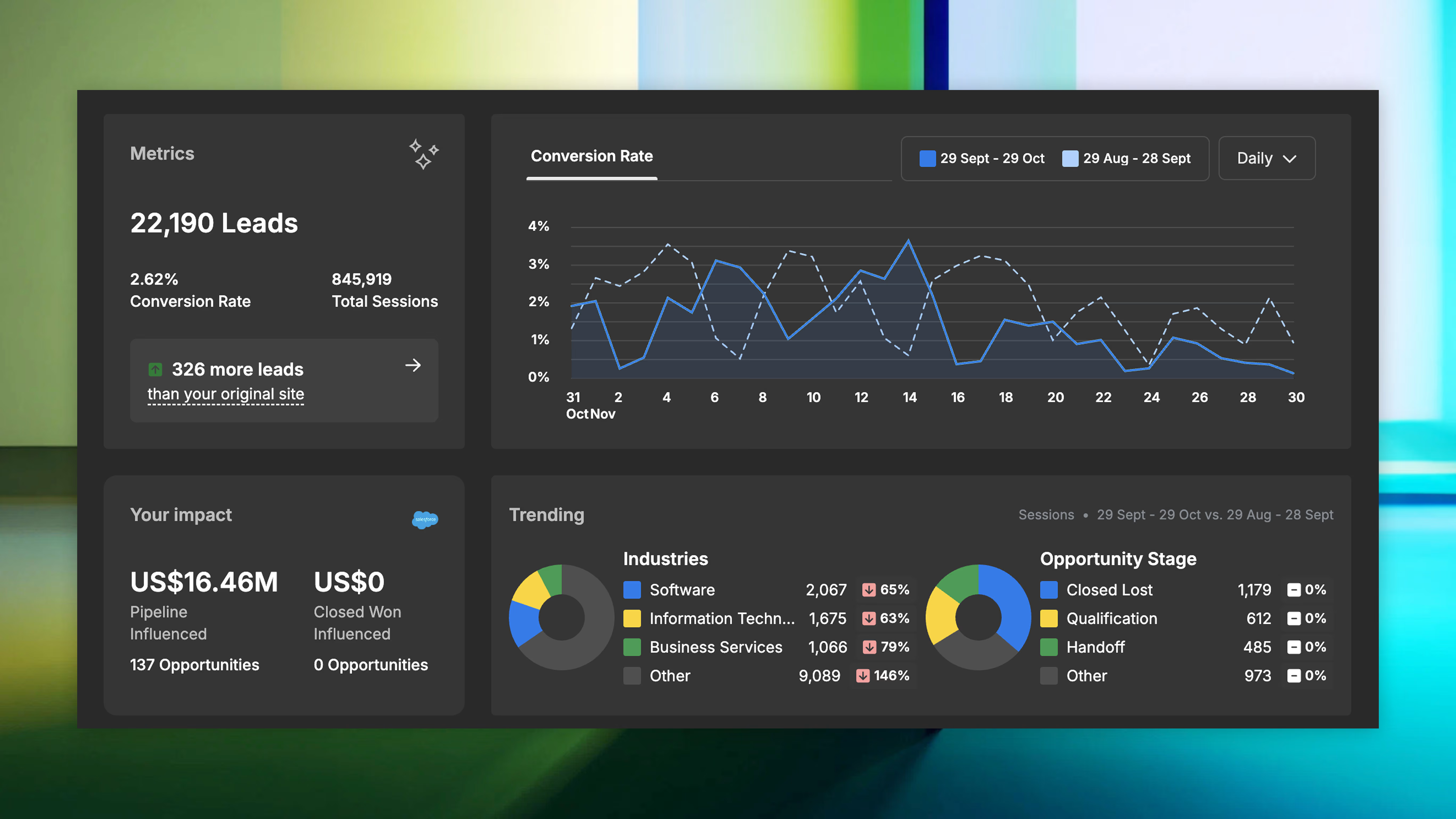Webflow CRO: How to enable CRO with Webflow Optimize tutorial

The future of web business isn't just traffic, it's Conversion Rate Optimization (CRO) through hyper-personalization. If your website delivers the same experience to every visitor, you are losing the competitive race. Webflow Optimize is the crucial platform that allows you to move beyond static sites and embrace the power of tailored, segment-specific interactions. By employing A/B testing and manual personalization, you can continuously tune your site to perfectly align visitor behavior with your high business priorities.

Defining the Optimization Unit: The Variation
To initiate any performance improvement initiative, you must define the change you're testing. This is the Variation. A Variation is a specific, discrete change in the customer experience to experiment with. Examples include:
- A single change to a page element — e.g., swapping in a different headline
- Multiple changes to a single element — e.g., new copy, and color for a CTA
- A combination of changes to multiple elements — e.g., an alternate layout
- A redirect to a different page entirely
The Business Imperative for Optimization
An optimally performing website is not only attractive to the eye; it's a conversion machine. If lead gen, sales quantity, or sign-ups are the people's objectives, optimization makes sure your site runs more effectively by taking advantage of data-driven decision-making based on in-depth visitor analysis. Webflow Optimize incorporates goal alignment into your development process, generating the highest return on investment (ROI) possible from your existing traffic.
The Continuous Improvement Cycle (The CRO Loop)
Optimization is an organized process with the goal of increasing your Conversion Rate (CR).
- Objectives: Define a clear, measurable business goal. From there, deploy Variations with the goal of increasing the CR.
- Experience to Exposure: A visitor interacts with the site and is exposed to a particular Variation.
- Behavior Tracking: Visitor behavior is measured (e.g., CTA click-throughs, scroll depth, session abandonment).
- Performance Analysis: Webflow Optimize takes this performance information together with the defined business objective to statistically claim the winning experience.

Strategic Optimization Deployment
Webflow Optimize offers three strategic deployment options:
Testing (A/B and Multivariate)
This method is all about displaying alternative component Variations to your audience to determine which converts at a greater rate. You're the one controlling the variables (i.e., two CTAs) and driving traffic according to your test plan. The outcome is a data-backed, smart decision about which creative element performs best.
Personalization (Segmentation)
This allows you to customize the site experience against known audience attributes or segments. This is optimal when you already know what experiences are linked with performance for different groups (e.g., segregated CTA for new visitors versus repeat customers). You define the audience segment and then deliver the customized Variation to the same group.
AI Optimize (Machine Learning-Driven Allocation)
AI Optimize harmonizes the worth of testing and personalization. Using machine learning, it automatically identifies visitor profiles and allocates them, in real time, to the top-performing Variation. It removes the need to evenly divide traffic or specify audiences in advance. The AI optimizes traffic allocation continuously to minimize exposure to low-performing experiences and maximize conversion yield. Such a method is ideal for rapidly testing many advanced combinations.
Building the Optimization Strategy
Optimization without a well-defined target is wasteful. A good optimization strategy requires discipline:
- Set the Measurable Goal: The conversion goal must be clearly defined, measurable, and tied to an important business outcome. If it does not have a key metric tied to it, it is low-priority.
- Find Friction Points: Use data to determine where to focus effort:
- CTAs with low click-through rates (CTR).
- High drop-off rates in key funnels.
- Mismatch between external traffic source intent and on-page content promise.
- Create the Hypothesis: Turn the friction point into an actionable, step-by-step solution. The hypothesis dictates what is going to be modified (content or design) and why that modification will most likely improve the result.
- Run and Monitor: Select the appropriate optimization type (Testing, Personalization, or AI Optimize) and closely monitor the outcome to apply the champion.
---
If you're ready to truly shake up your digital performance, Schedule a consultation with us today!
For more updated news about Karpi studio follow us on Linkedin



.webp)
